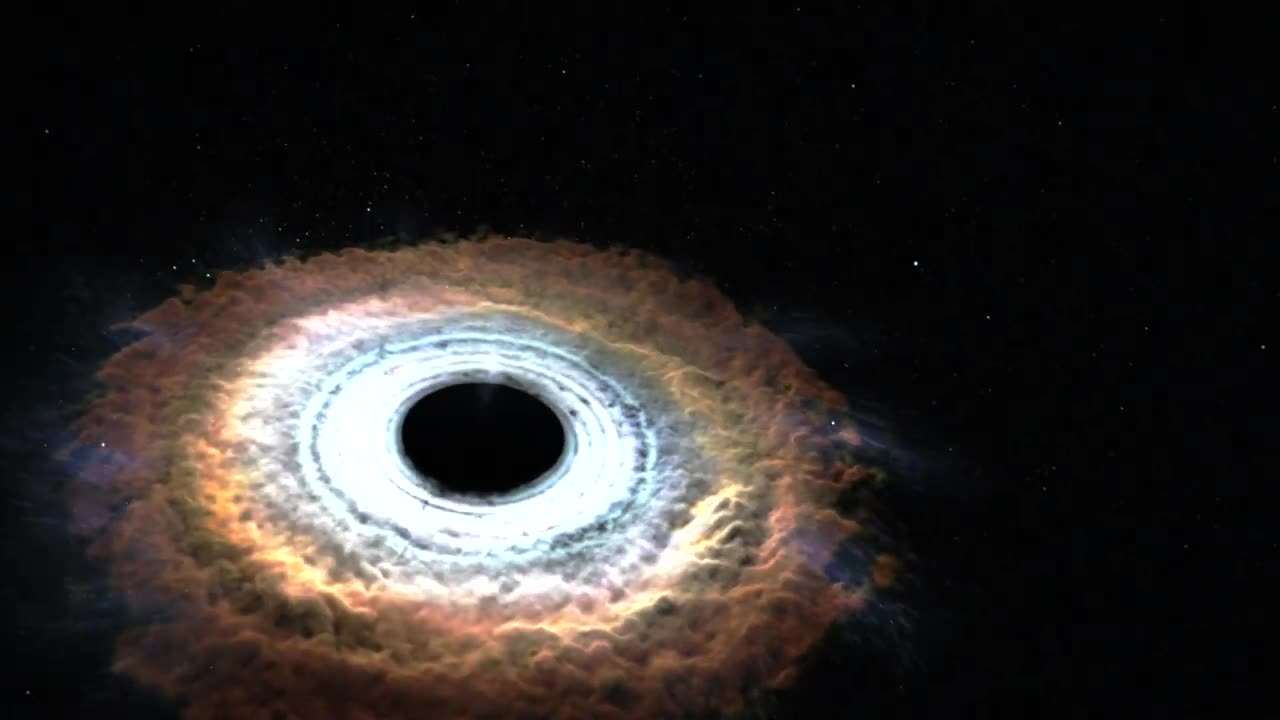Premium Only Content

Massive Black Hole Shreds Passing Star
**YouTube video description:**
This video describes a tidal disruption event, a rare phenomenon that occurs when a star wanders too close to a black hole and is ripped apart by the black hole's intense gravitational forces. In some cases, some of the stellar debris is flung outward at high speed, while the rest falls toward the black hole. This causes a distinct X-ray flare that can last for a few years.
The video focuses on a tidal disruption event called ASASSN-14li, which was discovered in November 2014. The event occurred near a supermassive black hole estimated to weigh a few million times the mass of the sun in the center of PGC 043234, a galaxy that lies about 290 million light-years away.
The video describes how the tidal disruption event unfolded:
1. The star wandered too close to the black hole.
2. The black hole's tidal forces ripped the star apart.
3. Some of the stellar debris was flung outward at high speed, while the rest fell toward the black hole.
4. The infalling material formed filaments.
5. The filaments merged into a smooth, hot disk glowing brightly in X-rays.
6. The central region of the disk heated up tremendously, which drove a flow of material, called wind, away from the disk.
Astronomers hope to find more events like ASASSN-14li to test theoretical models about how black holes affect their environments.
**Key points:**
* Tidal forces are differential gravitational forces that stretch and squeeze objects.
* A supermassive black hole is a black hole with a mass that is at least a million times the mass of the sun.
* An X-ray flare is a sudden and temporary increase in the X-ray emission from an astronomical object.
* A gaseous filament is a long, thin thread of gas.
* An accretion disk is a rotating disk of material that is spiraling inward towards a central object.
* A wind is a stream of gas that is flowing away from an astronomical object.
**Why tidal disruption events are important:**
Astronomers are interested in tidal disruption events because they can provide information about the behavior of supermassive black holes and the environment around them. By studying tidal disruption events, astronomers can learn more about how supermassive black holes grow and how they interact with the galaxies in which they reside.
-
 LIVE
LIVE
The Rubin Report
1 hour agoCharlie Kirk’s Warning for MAGA if Mamdani Won
2,846 watching -
 1:00:32
1:00:32
VINCE
3 hours agoNYC Has Been Seized By The Communists | Episode 162 - 11/05/25
138K159 -
 1:33:32
1:33:32
Graham Allen
3 hours agoTold You The War Was FAR From Over… The Blue Wave Just Proved It! Evil Is Fighting Back!
88.6K94 -
 LIVE
LIVE
Badlands Media
9 hours agoBadlands Daily: November 5, 2025
2,212 watching -

Wendy Bell Radio
7 hours agoLike Sheep To Slaughter
73.6K97 -
 1:13:30
1:13:30
DML
3 hours agoDML LIVE: NYC Goes Socialist: Mamdani’s Victory
47.1K14 -
 1:04:43
1:04:43
Chad Prather
15 hours agoTruth on Trial: When Fear Meets Faith
74.1K42 -
 LIVE
LIVE
LFA TV
14 hours agoLIVE & BREAKING NEWS! | WEDNESDAY 11/5/25
4,185 watching -
 1:57:16
1:57:16
The Chris Salcedo Show
14 hours ago $0.18 earnedDems Win In Dem States...And They Celebrate?
37.3K16 -
 1:04:43
1:04:43
Crypto Power Hour
12 hours ago $0.04 earnedPsychology Of Crypto Market Cycles
53.8K6